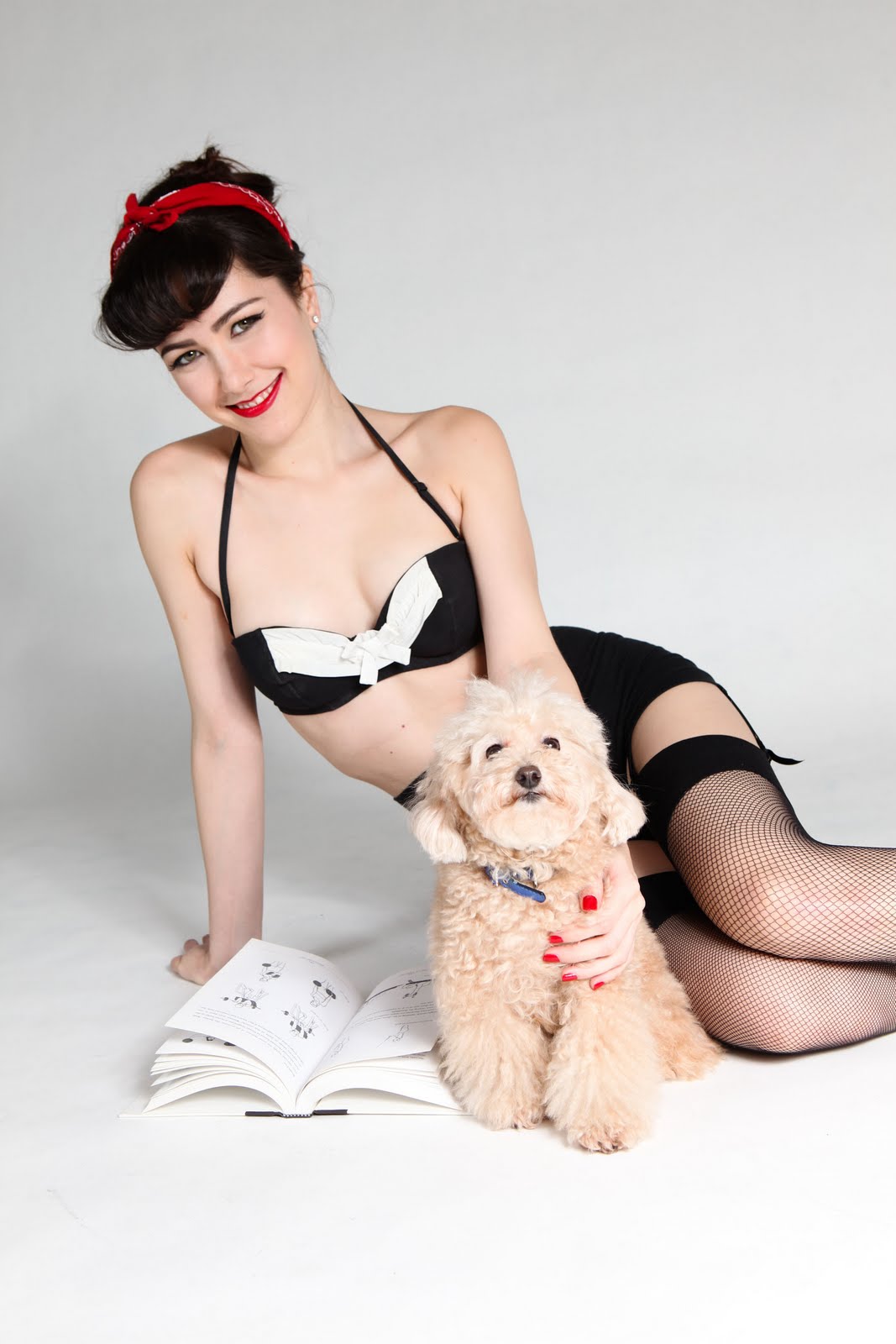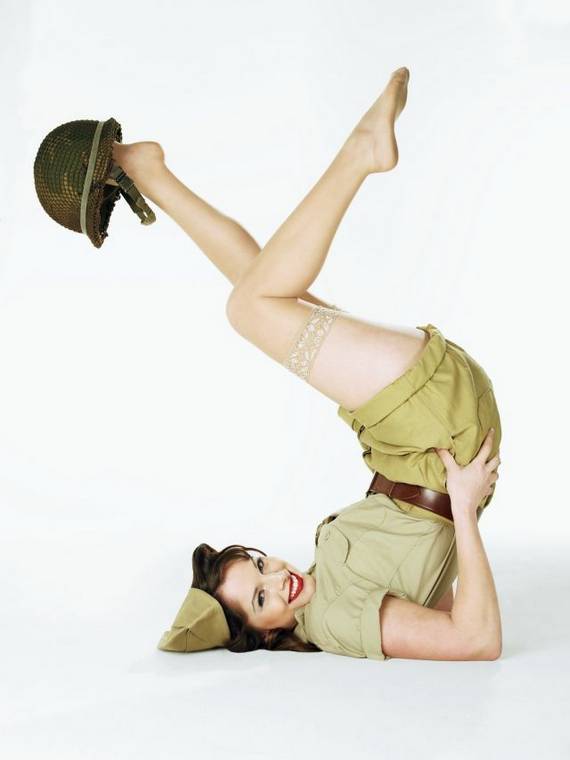Pin Up Girl Biography
Source(google.com.pk)
Buried beneath the Philippines surplus of gimmick-laden pop fluffs and diva clones, the Pin-Up Girls leapt over regional apathy to carve their own destiny in the U.S. indie scene. The Pin-Up Girls, affectionately nicknamed the Pin-Ups by their fans, were formed in 1996 by Mondo Castro (vocals, guitar) and ex-Keltscross members Pamela Aquino (vocals, guitar) and Jeng Tan (vocals, bass). The three discovered a mutual affinity for '80s new wave while hanging out in a bar. They decided to form a group, one that would revive the post-punk aesthetics of their '80s heroes such as the Smiths, Echo & the Bunnymen, and the Lotus Eaters. They eventually added guitarist Ryan Nachura and drummer Noel Garcia and began performing new wave covers at local clubs. At the time it was not fashionable to sing new wave tunes, especially with rap-rock quickly becoming the flavor of the latter half of the decade. Nevertheless, the Pin-Up Girls refused to compromise, reworking '80s cult classics like Blue Zoo's "Love Moves in Strange Ways," the Chameleons' "Tears," and the Housemartins' "Build" for small, hip crowds while writing their own material. The band started to shape their sound; they used two- and three-part male and female vocal harmonies and jangling guitars as their foundation. Finding zero interest from Philippine record labels, the Pin-Up Girls held a garage sale to raise money to make their own CD. In July 2001, they released Hello Pain by themselves. The album featured a number of tracks, including "Witching Hour" and "Ride Rocket Wild," that became surprise hits on Philippine radio stations. When Aquino left for the U.S., she was temporarily replaced by Jaja Manuel of Girl in Park. On July 2003, the Pin-Up Girls made their American debut with the critically acclaimed five-track EP Taste Test. The limited-edition CD quickly sold out, and the dreamy ballad "Caress" hit number one on NU-107 in the Philippines and on Flashback Alternatives in New Jersey. Garcia didn't remain with the band and Mitch Singson took his place. Aquino re-formed the all-Pinay new wave group Prettier Than Pink with founding member Lei Bautista in the U.S. yet never stopped contributing songs to the Pin-Up Girls. In 2004, Taste Test was reissued with several bonus tracks as Taste Test: Expanded Menu, receiving rave reviews in the U.K. and drawing comparisons to the Go-Betweens and the Wake. Inspired by their international accolades (albeit still relatively ignored in their own land), the Pin-Up Girls continued to evolve, reaching beyond the '60s-flashback ringing riffs of their old songs with the lush orchestration of "Caress," the minor-key gloom of "Pictures," and the synthesized pop of "How Does It Feel." ~ Michael Sutton, Rovi.
"As sexual images of women multiplied in the popular culture, women participated actively in constructing arguments to endorse as well as protest them."[14]As early as 1869, women have been supporters and protestors of the pin-up. Women supporters of early pin-up content considered these to be a "positive post-Victorian rejection of bodily shame and a healthy respect for female beauty."[15] Conversely, women protesters argued that these images were corrupting societal morality and saw these public sexual displays of women as lowering the standards of womanhood, destroying their dignity and harmful to both women and young adolescents.[15]It has further been argued by critics that in the early 20th century, these drawings of women helped define certain body images—such as being clean, being healthy, and being wholesome—and were enjoyed by both "normal" men and women; but as time progressed these images changed from respectable to illicit.
Buried beneath the Philippines surplus of gimmick-laden pop fluffs and diva clones, the Pin-Up Girls leapt over regional apathy to carve their own destiny in the U.S. indie scene. The Pin-Up Girls, affectionately nicknamed the Pin-Ups by their fans, were formed in 1996 by Mondo Castro (vocals, guitar) and ex-Keltscross members Pamela Aquino (vocals, guitar) and Jeng Tan (vocals, bass). The three discovered a mutual affinity for '80s new wave while hanging out in a bar. They decided to form a group, one that would revive the post-punk aesthetics of their '80s heroes such as the Smiths, Echo & the Bunnymen, and the Lotus Eaters. They eventually added guitarist Ryan Nachura and drummer Noel Garcia and began performing new wave covers at local clubs. At the time it was not fashionable to sing new wave tunes, especially with rap-rock quickly becoming the flavor of the latter half of the decade. Nevertheless, the Pin-Up Girls refused to compromise, reworking '80s cult classics like Blue Zoo's "Love Moves in Strange Ways," the Chameleons' "Tears," and the Housemartins' "Build" for small, hip crowds while writing their own material. The band started to shape their sound; they used two- and three-part male and female vocal harmonies and jangling guitars as their foundation. Finding zero interest from Philippine record labels, the Pin-Up Girls held a garage sale to raise money to make their own CD. In July 2001, they released Hello Pain by themselves. The album featured a number of tracks, including "Witching Hour" and "Ride Rocket Wild," that became surprise hits on Philippine radio stations. When Aquino left for the U.S., she was temporarily replaced by Jaja Manuel of Girl in Park. On July 2003, the Pin-Up Girls made their American debut with the critically acclaimed five-track EP Taste Test. The limited-edition CD quickly sold out, and the dreamy ballad "Caress" hit number one on NU-107 in the Philippines and on Flashback Alternatives in New Jersey. Garcia didn't remain with the band and Mitch Singson took his place. Aquino re-formed the all-Pinay new wave group Prettier Than Pink with founding member Lei Bautista in the U.S. yet never stopped contributing songs to the Pin-Up Girls. In 2004, Taste Test was reissued with several bonus tracks as Taste Test: Expanded Menu, receiving rave reviews in the U.K. and drawing comparisons to the Go-Betweens and the Wake. Inspired by their international accolades (albeit still relatively ignored in their own land), the Pin-Up Girls continued to evolve, reaching beyond the '60s-flashback ringing riffs of their old songs with the lush orchestration of "Caress," the minor-key gloom of "Pictures," and the synthesized pop of "How Does It Feel." ~ Michael Sutton, Rovi.
"As sexual images of women multiplied in the popular culture, women participated actively in constructing arguments to endorse as well as protest them."[14]As early as 1869, women have been supporters and protestors of the pin-up. Women supporters of early pin-up content considered these to be a "positive post-Victorian rejection of bodily shame and a healthy respect for female beauty."[15] Conversely, women protesters argued that these images were corrupting societal morality and saw these public sexual displays of women as lowering the standards of womanhood, destroying their dignity and harmful to both women and young adolescents.[15]It has further been argued by critics that in the early 20th century, these drawings of women helped define certain body images—such as being clean, being healthy, and being wholesome—and were enjoyed by both "normal" men and women; but as time progressed these images changed from respectable to illicit.
Pin Up Girl Pictures

Pin Up Girl Pictures

Pin Up Girl Pictures

Pin Up Girl Pictures

Pin Up Girl Pictures

Pin Up Girl Pictures

Pin Up Girl Pictures

Pin Up Girl Pictures

Pin Up Girl Pictures

Pin Up Girl Pictures

No comments:
Post a Comment